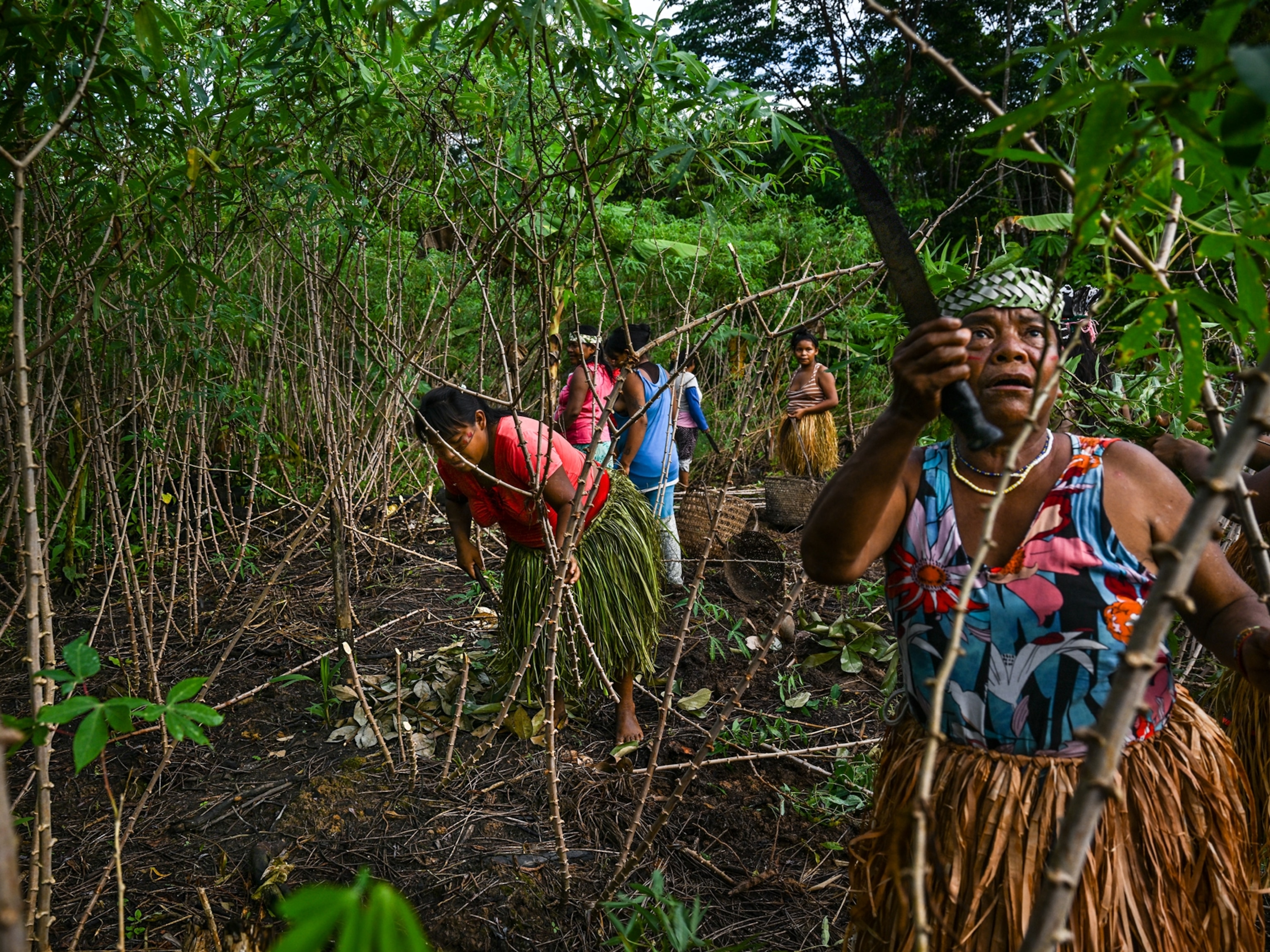
A Meeting of Cultures Creates a New Vision of a Tribal Tradition
“We clicked in a random museum, in the middle of a blackout, on a rainy day,” Roberto Falck says of meeting John Walters, a volunteer at the McCarthy Museum in Goroka, Papua New Guinea. Falck, a portrait photographer, was in the country to continue a decadelong visual exploration that had taken him to places like Ecuador, Morocco, and Kenya, making photographs that convey the aesthetic beauty of tribal traditions. That afternoon, he had ducked into the small ethnographic museum to take a break from his travels.


Ideas were churning in Falck’s head from having spent a couple of days in a nearby Chimbu village. The Chimbu have a tradition of painting themselves as skeletons as a mode of psychological intimidation, and they’re often photographed. Thanks to an introduction from a local tour guide, members of the tribe had offered to don their body paint and pose for Falck, and the shoot had gotten his creative juices flowing. But he wanted to take his ideas further. What if, instead of photographing a tradition that already existed, he took elements of it and created something new?

Falck was the only visitor in the museum, but Walters offered to show him around anyway. The two struck up a conversation. Falck shared what he had done with the skeleton series and talked through what he was thinking of next, even though at that point he wasn’t sure how to pull it off. “We had a play of energies when we put our heads together,” Falck says. Walters offered to help, effectively becoming Falck’s onsite producer.
Walters enlisted the help of his community on the outskirts of Goroka, where more members of the Chimbu tribe lived. His wife suggested they set up the shoot in their front yard, where there was a tree for an overhead vantage point. Neighbors brought bed sheets, which they hung from the branches to create soft light on the ground. A friend of Walters’s found the models, whom Falck hired. A crowd gathered to watch. “It became an event that we were doing in the middle of this little town,” Falck says.


The models painted themselves using the materials the Chimbu use for their traditional skeleton designs—clay from the banks of the local river and ash from burned wood mixed with water. With Walters acting as a translator, Falck directed the models to arrange their bodies in different configurations, using the shapes of their bodies as a guide. “It was kind of a creative process on the go,” Falck says. “I’ve always been interested in shapes and how they come together. It was almost like a [human] puzzle.”


While Falck has experience both producing fine art shoots at home in New York and making environmental portraits on his travels, this impromptu cultural exchange was inspiring—and unexpected. “Creating something new in this world is hard. It’s hardly ever a one-man thing. There are things you can do with different cultures—regardless of ethnicity, language, geography—to collaborate.”
Skeletons” and “Clay and Ash
website
Related Topics
You May Also Like
Go Further
Animals
- Soy, skim … spider. Are any of these technically milk?Soy, skim … spider. Are any of these technically milk?
- This pristine piece of the Amazon shows nature’s resilienceThis pristine piece of the Amazon shows nature’s resilience
- Octopuses have a lot of secrets. Can you guess 8 of them?
- Animals
- Feature
Octopuses have a lot of secrets. Can you guess 8 of them?
Environment
- This pristine piece of the Amazon shows nature’s resilienceThis pristine piece of the Amazon shows nature’s resilience
- Listen to 30 years of climate change transformed into haunting musicListen to 30 years of climate change transformed into haunting music
- This ancient society tried to stop El Niño—with child sacrificeThis ancient society tried to stop El Niño—with child sacrifice
- U.S. plans to clean its drinking water. What does that mean?U.S. plans to clean its drinking water. What does that mean?
History & Culture
- Gambling is everywhere now. When is that a problem?Gambling is everywhere now. When is that a problem?
- Beauty is pain—at least it was in 17th-century SpainBeauty is pain—at least it was in 17th-century Spain
- The real spies who inspired ‘The Ministry of Ungentlemanly Warfare’The real spies who inspired ‘The Ministry of Ungentlemanly Warfare’
- Heard of Zoroastrianism? The religion still has fervent followersHeard of Zoroastrianism? The religion still has fervent followers
- Strange clues in a Maya temple reveal a fiery political dramaStrange clues in a Maya temple reveal a fiery political drama
Science
- Soy, skim … spider. Are any of these technically milk?Soy, skim … spider. Are any of these technically milk?
- Can aspirin help protect against colorectal cancers?Can aspirin help protect against colorectal cancers?
- The unexpected health benefits of Ozempic and MounjaroThe unexpected health benefits of Ozempic and Mounjaro
- Do you have an inner monologue? Here’s what it reveals about you.Do you have an inner monologue? Here’s what it reveals about you.
- Jupiter’s volcanic moon Io has been erupting for billions of yearsJupiter’s volcanic moon Io has been erupting for billions of years
Travel
- Follow in the footsteps of Robin Hood in Sherwood ForestFollow in the footsteps of Robin Hood in Sherwood Forest
- This chef is taking Indian cuisine in a bold new directionThis chef is taking Indian cuisine in a bold new direction
- On the path of Latin America's greatest wildlife migrationOn the path of Latin America's greatest wildlife migration
- Everything you need to know about Everglades National ParkEverything you need to know about Everglades National Park




